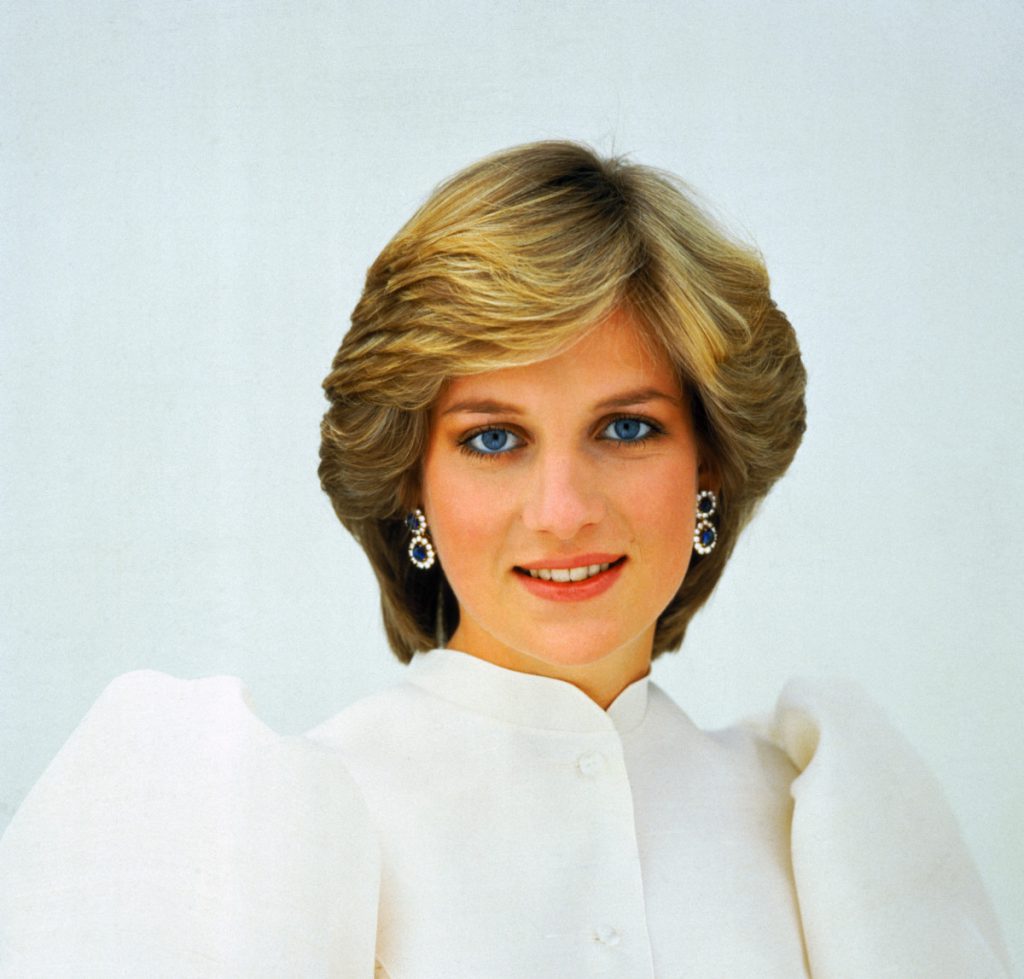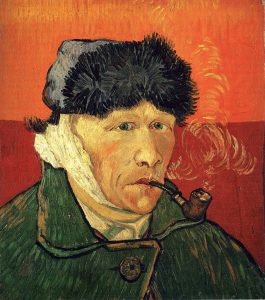Winner of the Fall 2019 StMU History Media Award for
Best Article in the Category of “People”
Two million people are cheering her name, 750 million eyes are upon her. She’s smoothing out her silk, ivory colored wedding dress embroidered with pearls and mother-of-pearl sequins. She is being transported to St. Paul’s Cathedral by five military police officers in a fairytale-like coach. Keeping her composure, she steps out of the stagecoach in her Cinderella-like wedding slippers. She walks up the steps of the Cathedral, head held high, the Spencer family tiara decorating her gorgeous short, blonde hair. As she enters the dome, all eyes are drawn to her glowing, innocent features and the twenty-five-foot train trailing behind; the opening song is played by one of the three orchestras that her fiancé has chosen. The date is July 29, 1981, marking the wedding of Prince Charles to Lady Diana. Diana knew that becoming Princess of Wales was going to be a great responsibility, one that couldn’t be taken lightly. She strongly believed it was either going to be a fairy-tale dream come true or a total nightmare; either way, it was too late that day for her to change her mind.1

Charles was absent for a lot of the first year of their marriage: he tended to his royal duties, participated in shooting, polo, and painting pictures. He lived a comfortable, no strings attached life with Diana that first year. Once, he even admitted to his past liaisons with some married women. They were deemed a “safer choice” because they would keep quiet—due to having families and husbands. Charles assumed Diana would fit perfectly into his lifestyle like a missing puzzle piece. This was not the case, as Diana and he had very different forms of entertainment and pastimes; there was also a rather large age gap of fourteen years.3 During their engagement, when Diana was nineteen and Charles was thirty-three, Prince Charles received a package. Diana, already suspecting Charles was hiding something, found a gold bracelet addressed to ex-lover Camila Parker-Bowles with the initials “F” and “G” intertwined; the initials were of the nicknames they had given to each other.4 “This was about two weeks before we got married…. So rage, rage, rage! ‘Why can’t you be honest with me?’ But, no, [Prince Charles] cut me absolutely dead.”5 Charles denied the accusations, making her feel paranoid and leaving her with second thoughts about marriage. Diana claimed she had considered canceling the wedding, discussing the situation with her two sisters, both responding with “your face is on the tea-towels so you’re too late to chicken out now.”6

The public viewed the wedding with a lot of admiration, so much that it blindsided them. The public was completely unaware that Diana could not handle the public scrutiny; her face was on every magazine cover and she was all the media talked about. Princess Diana was portrayed as calm and very put-together; she carried herself in a way that didn’t expose her weaknesses. This was the very mindset of the royal family, any form of unwanted exposure was immediately hidden or covered up, and she learned this a little too late. The wedding that was perceived as “a ceremony that bore the weight of centuries of national tradition” had a tragic story behind it.7
Diana would frequently visit the kitchen where she would participate in binge eating behaviors, such as eating endless bowls of ice cream and special snacks at request. Staff and friends were concerned about Diana’s dietary habits; she was so thin despite consistently raiding the fridge and eating excessive amounts of food in one sitting. Although they would frequently see her overindulge in food, Diana would make herself throw up five to six times a day. Diana claimed that her disorder was first triggered because of a comment Prince Charles made.8 “My husband put his hand on my waistline and said, ‘Oh, a bit chubby here, aren’t we?’ and that triggered off something in me—and the Camilla thing, I was desperate…. I remember the first time I made myself sick.”9

Diana started slipping into the deep end; her first pregnancy was tough on her body. Apart from morning sickness, Diana suffered from bulimia. Bulimia nervosa is characterized by recurrent episodes of binge eating followed by compensatory behaviors to prevent weight gain by self-induced vomiting, fasting, or excessive exercise. The onset of bulimia nervosa can be due to stressful life events and usually develops between adolescence and early adulthood. There is an increase in depressive symptoms and depressive disorders in affected individuals as well as a higher suicide risk. Mood disturbance begins at the same time or during the development of the eating disorder, but in other individuals, predates the illness.10
Diana became desperate; she would run around with a lemon knife. Diana knew something was wrong with her but didn’t know how else to ask for help. When she did reach out for help, Charles thought Diana was crying wolf and dismissed her threats. Charles became alarmed and overwhelmed by Diana’s frequent mood swings, her consistent crying, and obsession with his old mistress, Camilla Parker Bowles. He believed that she was being immature and seeking attention, so instead of helping his wife, he went riding on the Sandringham estate. Diana almost felt challenged by his response, so at two months pregnant, Diana placed herself at the top of a wooden staircase in Sandringham and threw herself down the stairs.11 “Very, very difficult pregnancy indeed. Sick the whole time, bulimia and morning sickness…. I didn’t know which way to turn at all…. Charles said I was crying wolf and I said I felt so desperate, and I was crying my eyes out, and he said, ‘I’m not going to listen. You’re always doing this to me. I’m going riding now.’ So I threw myself down the stairs.”12
Some could claim that Diana was immature and naive and in reality, she was just a child. Diana had just become a young adult when they were married; she still had an illusion of a perfect marriage, one that wouldn’t suffer from difficulties. Her mindset was heavily influenced by her childhood; Diana’s parents’ troubled marriage and their frequent fights, even after their divorce. She didn’t want her marriage to end up like her parents. Diana believed that a Royal marriage would complete the pretty picture she painted in her head, it couldn’t possibly be any less than perfect—after all, that is what she had read in novels.13
At this point, Diana knew that she wasn’t going to get what she wanted or what she needed: stability and compassion. Instead, she was being scorned and her feelings were minimized. “I was thrown into the deep end,” she said of royal life. “Nobody ever helped me at all.” This incident was one of many cries for help during their first year of marriage.14
Diana made several other threats to her life; she began engaging in self-mutilation. In one incident Diana threw herself against a glass display cabinet at Kensington Palace and shortly after, slashed her wrists with a razor blade. Even during an argument with Prince Charles, she picked up a penknife and cut her chest and thighs.15 Still, Diana kept up a happy-go-lucky persona for the public and continued her duties as Princess of Wales. In the midst of a troubled time, she grew and matured; she found herself. Even if Charles solely wanted to please his parents by marrying Diana when his heart belonged to someone else, she was beloved by so many and the public saw her as one of their own. Diana was one of the only Royals that didn’t make the masses feel like less than they are.16 She was able to find herself through the volunteer work she engaged with and by connecting to the public.17
Diana was perceived as having it all, being the “It Girl” only to be revealed that within those palace walls, she was living a nightmare.
- Anne Matheson, “A Day of Splendour and Romance,” Australian Women’s Weekly (2018): 48. ↵
- Barbara Cartland, “Royal Marriage: When Life isn’t a Romantic Novel,” Newsweek 120 (1992): 72. ↵
- A Biographical Encyclopedia, 2002, s.v. “Women in World History,” 591. ↵
- Andrew Morton, Diana: Her True Story (New York: Pocket Books, 1992), 90. ↵
- Andrew Morton, “Diana’s Secret Tapes,” People 88 (2017): 88. ↵
- Andrew Morton, Diana: Her True Story (New York: Pocket Books, 1992), 91. ↵
- Barbara Cartland, “Royal Marriage: When Life isn’t a Romantic Novel,” Newsweek 120 (1992): 72. ↵
- Andrew Morton,Diana: Her True Story (New York: Pocket Books, 1992), 96. ↵
- Andrew Morton, “Diana’s Secret Tapes,” People 88 (2017): 88. ↵
- American Psychiatric Association, Diagnostic and Statistical Manual of Mental Disorders Fifth Edition (Arlington, VA: American Psychiatric Association, 2013), 345-347. ↵
- Andrew Morton, Diana: Her True Story (New York: Pocket Books, 1992), 104-105. ↵
- Andrew Morton, “Diana’s Secret Tapes,” People 88 (2017): 88. ↵
- Barbara Cartland, “Royal Marriage: When Life isn’t a Romantic Novel,” Newsweek 120 (1992): 72. ↵
- Andrew Morton, “Diana’s Secret Tapes,” People 88 (2017): 88. ↵
- Andrew Morton, Diana: Her True Story (New York: Pocket Books, 1992), 105. ↵
- Martha Duffy, “Fractured Fairy Tale,” Time Magazine 147 (1996): 60. ↵
- Encyclopedia of World Biography, 2004, s.v. “Diana Princess of Whales,” 531. ↵



102 comments
Patricia Arechiga
Her death brings nothing but sadness to me. Diana was someone who did not allow her new title to change her character. Diana continued to sustain passion in regards to helping other people. She took time to visit children and stayed close to not only her people but people worldwide. It is so upsetting to see someone so real be taken away from this world too soon. However, her legacy will forever remain.
Charli Delmonico
This article was very intriguing. I thought I knew much about Diana’s life story, but I didn’t know the depth of her tragic life being married to the Prince of Wales. I can’t believe she felt so alone that she would inflict pain on herself and force herself to throw up after eating a large amount of food. I’m sad that her experience living the life many girls dream of was terrible. She really did make people feel important, so it’s sad that her husband made her feel like a naive nuisance.
Lilia Seijas
As a dear friend of the writer, I have to admit I am biased when writing this review. I found it incredible. It is informative, thrilling, eye-catching, and raises awareness on a taboo topic. Mental health is an important thing to consider when we see people on the media. Princess Diana was considered the princess of the people, but no one really cared about her own well being. By raising awareness and talking about how mental health not only affects the common folk but anyone for that matter, we destigmatize the topic.
Stephanie Cerda
Diana is often portrayed as the perfect example of royalty. She really did manage to reach the public and obtain their love by how real and kind she was. It’s crazy to think about how media coverages and all that can lead to a skewed perspective of how people really are. She went through so much and didn’t show it. She was really strong. I think the biggest proof of her strength was that she actually reached out for help. Often, asking for help and admitting you need it tends to be the hardest thing you can do.
Sierra Salas
I had no idea that Princess Diana struggled this badly behind the palace walls. I remember learning about how she served others through volunteer work and how she was admired by the public because she was different from the other royals, she was down-to-earth. I think because of her marital problems and the fact that her every move was reported on every newspaper and news station, she developed eating disorders and other illnesses. I say this because she was aware that she had a problem and went to her husband to seek support and acknowledgement, yet he rejected her and instead went to go ride a horse. I think this article shows how anyone can play a role of perfection when in the inside they are suffering.
Victoria Muller
I feel really sorry for Diana, what girl doesn’t dream of finding a prince and having the perfect life. Upon achieving what seems like a dream only turned into a nightmare for her. Se was so young to imagine all of the pressures she was facing and having no one she could turn to for help. Whenever she did turn to someone for help she never got the help she needed, I’m surprised that she was able to keep up with what was expected of her in the public eye.
Angelina Gonzalez
I couldn’t have been more surprised by this article. I had no idea Princess Diana had this many struggles to deal with. Not to put the blame on someone else, but her husband was no help and honestly I would define as the root of her issues. I always viewed her to be this positive light on the world, and although she was, I can’ t help but see her differently. I wish she would have found that true love she craved. I am glad she at least found comfort in helping others, that is what made her so admirable.
Vania Gonzalez
When you hear the name Diana this is probably the person you think of and how perfect her life “was” but this is one of those examples of you really do not know what people are going through. Diana found her own way out of it in the end and got out of the situation but I can not believe she was alone in this time and was not listened to as she cried for help.
Dr. Pierucci
You have captured the epitomized life as a Princess while balancing the reality of her life struggles. I am glad you have highlighted a topic that is often quite hushed – eating disorders. Keep raising awareness.
Isabella Torres
This is a really amazing article! I had no idea that Princess Diana suffered from bulimia, and I also has no idea how problematic her marriage with Prince Charles was. It is so heartbreaking how she had to endure such carelessness from her own husband. Although Diana shouldn’t have been so naive in expecting a perfect fairy tale marriage, she definitely did not deserve to be treated the way that her husband treated her. It must have been horrible to be in a situation where nobody takes you seriously when you ask for help. I really like how this article gives details about the problems in both Diana’s personal life as well as in her relationship within her marriage.